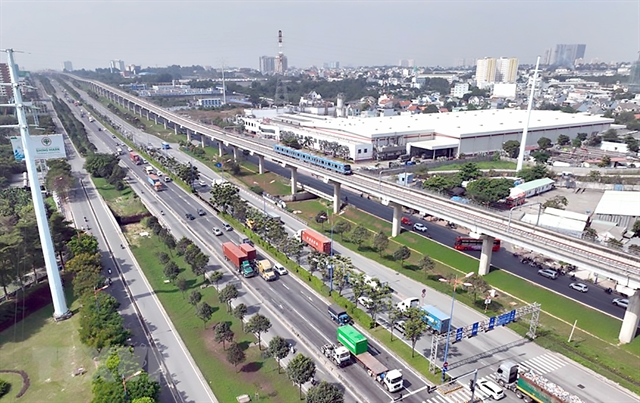 Society
Society

 |
| A parking lot which encroaches into public space in Dịch Vọng Hậu Ward, Cầu Giấy District, Hà Nội. VNA/VNS Photo |
To take some pressure off parking in Hà Nội, it has been proposed that vacant spaces or land lots of projects with slow progress should be granted temporary permits to become parking lots. Transport export Vũ Hoàng Chung talks to Kinh Tế Đô Thị (Economic and Urban Affairs) newspaper about this topic.
How do you evaluate Hà Nội's policy of granting temporary parking permits to behind-schedule projects?
I think this is a necessary policy. In the context that the city lacks static traffic infrastructure and the demand is so great today, turning empty spaces in the heart of the city into parking areas is an important solution that will be effective.
It is such a waste to leave government-managed land plots without investment projects or with behind-schedule projects.
In fact, if we don’t grant the parking permits to those land lots, they would still be illegally turned into parking lots and benefit individuals.
In some places, illegal car parks have existed for decades. Trillions of đồng are estimated to have been collected with no tax.
Meanwhile, the city’s authorities have to borrow money to invest in transport infrastructure. That is a paradox that must be dealt with and the best solution is licensing to manage and collect taxes.
This is already a proper policy but the implementation progress remains slow. In your opinion, what is the reason behind?
I think the biggest reason is the lack of a clear legal corridor, leading to the fact that management agencies stay cautious and do not dare to grant licences.
Other reasons should be mentioned, for example, enterprises lack experience and understanding in this service field.
In your opinion, what should Hà Nội do to remove obstacles and soon launch temporary car parking lots on vacant land?
First of all, the city needs to recognise and appreciate the role of this solution in urban life. It has great significance in the current context and in the long term, so it needs to be organised and implemented systematically and strictly.
In my opinion, the city can set up a joint steering committee to overcome difficulties with the temporary parking lot model.
The steering committee will review reality and collect data to develop a general regulation and process for granting temporary parking permits for vehicles in vacant plots of land and land of slow-moving projects.
When completing the regulations, the steering committee can be dissolved or converted to work in another field.
The committee will help the city People’s Committee reduce work load while units and localities have clearer direction in completing the process through administrative and legal procedures.
What conditions are required for temporary parking lots to be licensed?
I see that Hà Nội is very successful with the non-cash fee collection model in parking services. That is a very important condition for managing and exploiting this model.
It is necessary to consider the application of cashless toll collection as a mandatory condition for units that want to apply for a licence.
In addition, localities should be given the authority to appraise, license and manage these temporary parking spots. At the same time, taxes and fees are paid into the local budget, thus creating additional revenue for localities to reinvest in infrastructure.
The conditions for fire prevention, fighting, and traffic organisation must also be ensured.
The most important thing to pay attention to is the timeline for temporary parking lot licensing.
Many businesses with weak capacity or not willing to implement the project may consider applying for a parking permit as an excuse to procrastinate.
It is necessary to clearly classify which plots of land can be licensed and for how long. For project land plots that have been left unused for too long, we must consider withdrawing them to transfer to another investor, especially planned static traffic projects.
On the other hand, for vacant land plots managed by the locality, it is necessary to clearly define the maximum period of time that can be licensed, for example, two years or three years and encourage businesses to invest and apply for a licence. It should not be possible to issue a licence with a too short term.
The city also needs to adjust parking prices, especially in the inner city area. With the price based on the current regulations, not many units are willing to apply to be granted a parking lot licence, but illegally build their own. VNS